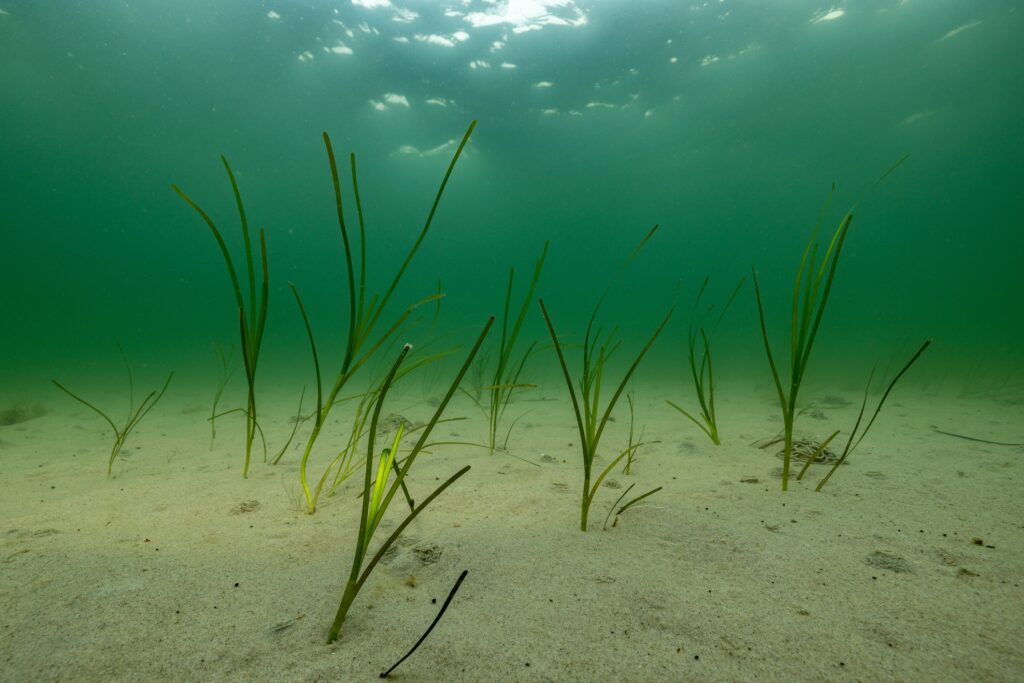Banner Image ©️ Submaris (www.submaris.com)
There is great interest in the restoration of formerly lost seagrass meadows in the German Baltic Sea. The SeaStore project is creating the scientific basis for this. To date, it has restored approx. 1000
square metres of seagrass (Zostera marina) at 3 locations each and is investigating its development.
Context.
Seagrass restoration in the southern Baltic Sea has rarely been crowned with success. The SeaStore team wants to understand why and develop a comprehensive, science-based restoration concept that takes into account influencing factors both in the sea and on land. To this end, scientists from the fields of ecology, coastal engineering, biogeochemistry, microbiology, geography, stakeholder processes and materials science are working hand in hand.
Vision.
The main objective of the SeaStore project is to develop a comprehensive guide for the protection and restoration of seagrass beds in the southern Baltic Sea. This should help authorities and other stakeholders to evaluate and possibly plan and successfully implement projects for the restoration of seagrass meadows. The guide will therefore cover all aspects of seagrass restoration: from choosing the right sites and suitable seeds or shoots; to guidelines on how they should be planted; to monitoring success and how coastal communities, tourists and other stakeholders need to be involved in the project to increase its chances of success and public acceptance.

What is new here is, firstly, that all recommended restoration measures have been thoroughly researched and tested in the project beforehand. This resulted in approx. 1000 square metres of seagrass (Zostera marina) at 3 locations each and will continue over the coming years. Secondly, the
project partners are also investigating environmental factors that have received little attention to date, such as the diversity of microorganisms on the seagrasses and in the seabed. And thirdly, they also investigate how biodiversity and ecosystem services like carbon sequestration will develop following restoration to understand when a restored meadow fully resembles a natural meadow in all processes.
